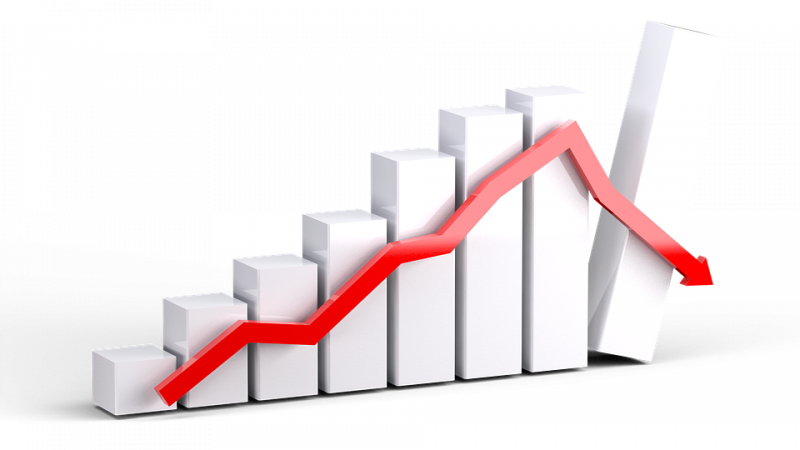
Avoid Fear During The Economic Downturn
- August 20th, 2019
|
AVOID FEAR DURING THE ECONOMIC DOWNTURN
February 16, 2009 Samuel N. Addy, Ph.D., Center for Business and Economic Research |
||||||||||||
|
So what is a business to do in an economic downturn, especially one that is as severe and complicated as what we are currently experiencing? The business cycle includes downturns, recessions, recoveries, expansions, booms, busts, and stagnation. Downturns and recessions are painful, but they occur less frequently and are of shorter duration. As a result, firms are usually unprepared for them. There is justifiably more focus on maximizing profits in the more frequent or longer periods of economic growth. Clearly, the strategy should switch to loss minimization during downturns without excluding the possibility of making some profit.
Business conduct and actions in a downturn typically run counter to those in economic recoveries or expansions for good reason. But should that always be the case? After all, the downturn affects industries and firms differently and there are still economic opportunities to be had. Fortunately, at least two guiding principles of business conduct apply in good times and bad: optimality and sustainability. The first, optimality, deals with doing what is best always because that is how payoff is guaranteed. The second principle helps in business decision making as regards right-sizing, exit, or entry. The suggestions provided in the rest of this article are guided by these two principles and borrow from five steps used in policy analysis as shown below.
Assess the situation realistically. Information and insight are necessary for this first step. It is important to know what is going on globally, nationally, regionally, and locally irrespective of the geographic coverage of the business’ market. For example, it is important to know that the United States, Europe, Japan, and several large developed countries are in recession. Many developing countries economies are slowing; including Brazil, Russia, India, and China. Commodity prices are falling and deflation is now the new focus of many central banks, at least for 2009. The U.S. economy was already slowing before the worst of the financial crisis hit in Sept/Oct 2008. Households, businesses, and governments are facing tighter credit and experiencing huge wealth (home value and equity) losses with high debt levels. Assessment is essential because increased uncertainty during economic downturns makes leadership and decision-making particularly difficult. Market research, including communication with suppliers and customers, should be ongoing. Networking, including membership in associations and attendance at events, must continue. These activities do not cost much, but many businesses, especially small ones tend to reduce or eliminate them in a downturn. Ironically, this is when businesses have more time to engage in such activities and they are crucial to making realistic assessments. Information needs to be gathered on economic forecasts, industry projections, input price trends, demand projections, financial health of customers and suppliers, workforce issues, expected length of the downturn, company contracts in effect, etc. Two questions that must be answered in the assessment step are; (i) can the company withstand the downturn and (ii) what are the company’s prospects long term? The answers to these two questions will help with the second step. Identify possible actions. In response to the assessment, possible actions that may need to be considered include closing shop, filing for bankruptcy, continuing business as usual, and restructuring. Business-as-usual is one case of restructuring which includes improving internal processes (to increase efficiency, reduce costs, and enhance productivity), expanding and diversifying clientele, and right-sizing. It may be necessary to consider downsizing permanently, downsizing followed later by an expansion, or a permanent expansion. The possible actions to consider are influenced by whether or not the company is service-providing or goods-producing as well as the downturn’s effects on company operations and prospects. It is important to consider different options. For example, downsizing may involve laying workers off, reducing hours, or furloughs. Estimate the impacts of possible actions. This step is essentially an estimation of the costs and benefits of each possible action and must recognize both quantitative and qualitative benefits and costs. As an example, if downsizing requires laying off workers, the intangibles those workers provided (e.g., team-building, leadership, productivity, institutional knowledge) must be listed. Wrong estimates of the true costs and benefits of each possible action can have devastating consequences as regards the preferred action(s) taken in the final step. Value the outcomes of each action. Here, the net quantitative benefits of each possible action are determined and some value is placed on qualitative impacts (e.g., lost team-building and leadership skills, lost productivity and institutional knowledge, loss of unproductive workers). Valuing qualitative outcomes is especially critical to identifying the preferred action(s). Take preferred action(s). The best action(s) is(are) selected here. The decision is also made as to the pace of taking these actions. For example, a downsizing could be undertaken gradually if certain contracts so require and so as to keep customers satisfied. So what should businesses do in this downturn? Don’t just hunker down or retreat. Be wise in facing the challenges. Do not be afraid to spend. Expand networking and gather information. Determine if you can withstand the downturn. Diversify and expand revenue base and streams, if possible. Your workers are your ultimate resource; if you ask them to make sacrifices, assure them of rewards (e.g. profit-sharing, bonuses) when things get better. Thoroughly reconsider and make changes to the business plan. Try to stem losses and close shop if that is the best thing to do. One certainty is that so long as businesses are guided by optimality and sustainability principles, whatever actions they take will be the right ones. |
